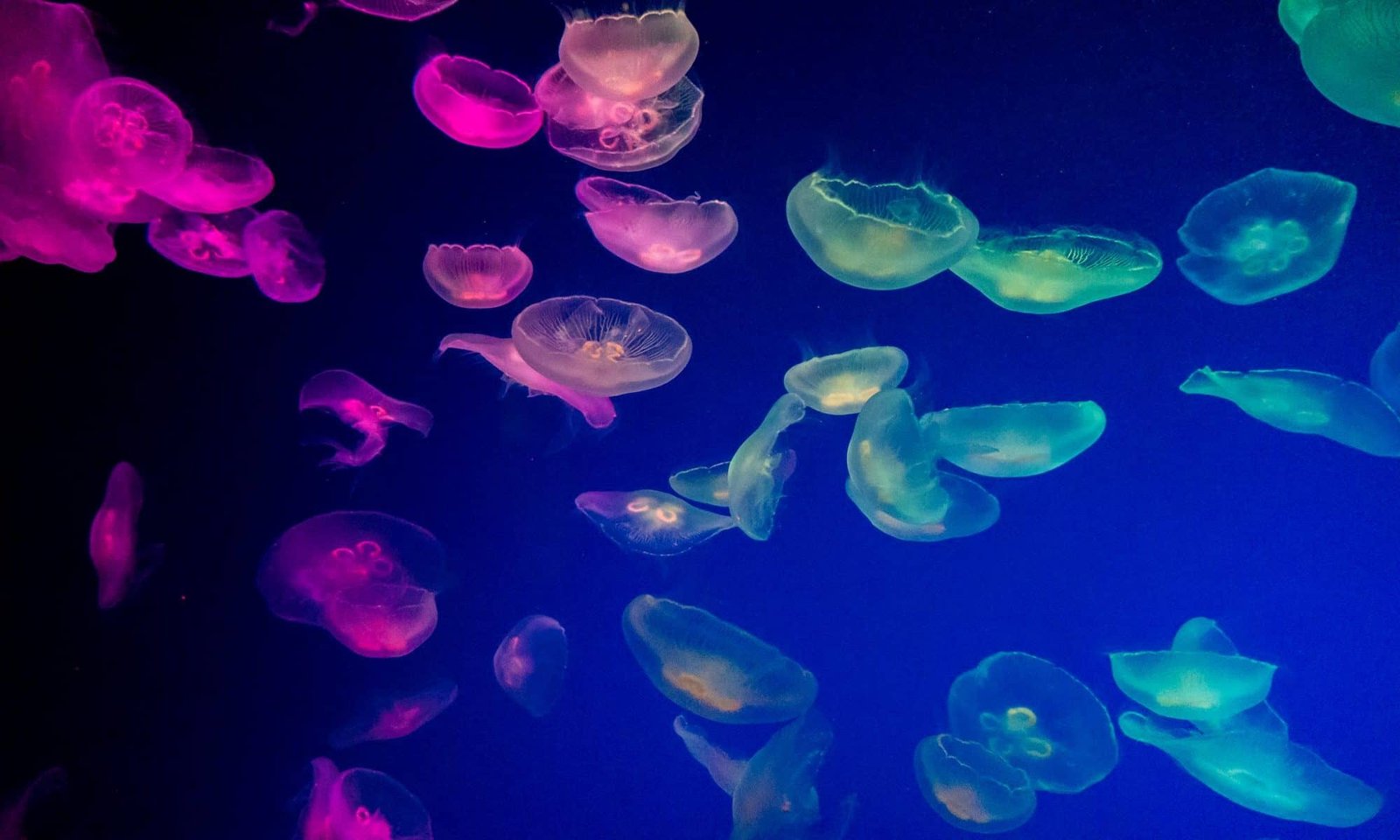Bioluminescence is a fascinating natural phenomenon that has captivated scientists and observers alike. It refers to the ability of certain organisms to produce and emit light through biochemical reactions. This biological light production is primarily found in various species of marine life, fungi, and insects. The light produced can serve multiple purposes, including communication, predation, and defense mechanisms. Its ethereal glow has also inspired countless myths, artworks, and scientific pursuits throughout human history.
How Does It Work?
The underlying mechanism of bioluminescence involves two main components: luciferins and luciferases. Lucifering, the light-emitting compound, reacts with oxygen in the presence of the enzyme luciferase to produce light. The chemical reactions can vary widely among organisms, resulting in different colors and intensities of light. Generally, the basic principle remains constant, and it is the structure of luciferins and the type of luciferase that dictates the specifics of the reaction.
Bioluminescent organisms are prevalent in diverse ecosystems. One remarkable example includes deep-sea creatures like the anglerfish, which uses bioluminescent lures to attract prey in the dark depths of the ocean. Another fascinating instance can be observed in certain species of fungi, such as the rare Armillaria mellea, or honey fungus, which emits a soft glowing light in decaying wood. Fireflies also showcase this ability through their flashing signals to attract mates. Collectively, these examples highlight the evolutionary advantages conferred by bioluminescence in survival and reproduction strategies.
In summary, bioluminescence is a striking manifestation of nature’s ingenuity, resulting from complex biochemical processes. Understanding its mechanisms not only deepens our appreciation for these organisms but also contributes to ongoing research in various scientific fields, including ecology, biotechnology, and medicine.
The Purpose of Bioluminescence
Bioluminescence serves multiple essential functions across various organisms in nature, primarily as a tool for communication, predation, and self-defense. This remarkable adaptation has evolved independently in numerous species, allowing them to thrive in diverse environments, particularly in the deep sea, where light is scarce.
One of the most captivating applications of bioluminescence is seen in fireflies, which utilize their natural glow for mating purposes. Male fireflies emit specific light patterns to attract females, who respond with corresponding flashes. This form of communication is not only intricate but also essential for reproduction, demonstrating how light can facilitate social interactions within species.
In addition to communication, bioluminescence plays a crucial role in predation. Many deep-sea creatures employ glowing lures to attract potential prey. For example, the anglerfish has a bioluminescent lure that dangles in front of its mouth, mimicking the appearance of smaller fish or other enticing prey. This strategy effectively draws in unsuspecting victims, allowing the anglerfish to secure its next meal. Similarly, certain species of jellyfish can emit a faint glow, helping them trap plankton and small fish that are drawn to their light.
Defense mechanisms also heavily rely on bioluminescence. Organisms such as the squid and certain types of shrimp can produce bright flashes of light when threatened, disorienting predators and providing a critical window for escape. Some species release bioluminescent substances into the water, creating a dazzling distraction that can mislead attackers while they make their getaway.
Bioluminescence, therefore, serves essential ecological purposes that contribute to the survival and interaction of species within their environments. By illuminating the dark depths of the ocean and engaging in complex behaviors, these organisms showcase the wonders of nature’s own light show.
Bioluminescence and Human Innovation
Bioluminescence, once a mystical curiosity, is now driving innovation across architecture, medicine, and sustainable design. By emulating nature’s luminous strategies, researchers are developing technologies that combine efficiency with ecological responsibility. One striking example is bioluminescent lighting: genetically modified bacteria or algae produce ambient light without electricity, offering a low-energy alternative for urban illumination. Pilot projects in cities like Paris and Tokyo have already demonstrated the feasibility of microbial street lamps, hinting at a future where biology replaces the bulb.
In medicine and environmental science, bioluminescence is proving equally transformative. Bioluminescent proteins allow researchers to track cellular processes in real time, improving diagnostics and drug testing — especially in cancer research. Marine-derived biosensors glow in response to toxins, providing a low-cost method for monitoring water quality and ecosystem health. These living indicators empower communities to detect pollution early and respond effectively.
Even fashion and design are exploring bioluminescence. Experimental garments incorporate glowing organisms or synthetic analogues, creating textiles that respond to movement or light conditions. This fusion of biology and aesthetics opens new paths for wearable technology and interactive art. As sustainability becomes imperative, bioluminescence offers a blueprint for low-impact, high-function solutions — a luminous reminder that nature’s ingenuity still outpaces our own.
Bioluminescence in Culture and Art
Bioluminescence, the natural phenomenon where living organisms produce and emit light, has fascinated human beings for centuries, inspiring various aspects of culture, art, and mythology. Many ancient civilizations incorporated bioluminescent organisms into their folklore, attributing supernatural qualities to them. For instance, in some cultures, fireflies were viewed as spirits of the deceased guiding the living, symbolizing hope and continuity. This connection between light and spirituality emphasizes how bioluminescence has held significant cultural value throughout history.
The enchanting glow of bioluminescent creatures has also served as a muse for artists and writers alike. From vivid paintings depicting bioluminescent landscapes to evocative poetry capturing the ethereal quality of glowing organisms, artists have used bioluminescence as a medium to express the beauty and mystery of nature. Literature, too, has embraced this phenomenon; it often draws upon bioluminescent imagery to evoke emotions and create vivid settings. Works of fiction have portrayed bioluminescent beings as magical or otherworldly entities, thereby reflecting humanity’s wonder towards the natural world.
In recent years, the intrigue surrounding bioluminescence has expanded into the realms of science and technology. Researchers are exploring bioluminescent substances for various applications in medical research and environmental monitoring. For example, scientists study bioluminescent proteins for their potential use in imaging techniques, which could revolutionize how we visualize cellular processes. Additionally, bioluminescence is being harnessed to develop biosensors that can detect environmental pollutants efficiently. The continuous exploration of bioluminescence in modern science demonstrates the enduring relevance of this natural phenomenon in both artistic expression and technological advancement.
Conservation and the Future of Bioluminescent Species
Bioluminescent organisms, ranging from glowing jellyfish to luminescent algae, are not just remarkable examples of nature’s creativity; they also play crucial roles in their respective ecosystems. Unfortunately, these fascinating species face significant conservation challenges due to climate change, habitat destruction, and pollution. The delicate balance of their environments is increasingly threatened by human activities, making awareness and action imperative for their survival.
Climate change is perhaps the most pressing issue affecting bioluminescent species. Temperature fluctuations can disrupt the delicate ecological niches these organisms inhabit, leading to shifts in their distribution and, in some cases, potential extinction. Ocean acidification, largely driven by increased atmospheric CO2 levels, can also harm the marine organisms that exhibit bioluminescence, especially those dependent on coral reefs, which are themselves under siege from changing conditions.
Habitat destruction poses another significant threat. Coastal development, deforestation, and overfishing jeopardize not only the bioluminescent organisms but also the intricate ecosystems they are part of. For example, many bioluminescent species require specific habitats for breeding and feeding. The degradation of these environments can lead to declines in population numbers, and ultimately the loss of unique species.
Pollution is yet another critical factor threatening bioluminescent organisms. Chemical runoff from agriculture, plastic waste, and oil spills contaminate the oceans, impacting the health of these unique species. Bioluminescent organisms are often indicators of ecosystem health, and their decline serves as a warning sign for broader environmental issues.
Despite these challenges, there are ongoing efforts to preserve bioluminescent species and their habitats. Research initiatives are focused on understanding the ecological roles of these organisms, as well as developing conservation strategies. Collaborative measures involving governmental bodies, non-profit organizations, and local communities are essential to ensure the future of these luminous wonders and the ecosystems they illuminate.
What’s More
The posts in My Blog feature reflective, story-driven pieces rooted in personal and societal insights.
The topics in My Interests explore abstract, philosophical ideas and their cultural and societal impact.













